Nanotechnology helps in the development of advanced bone implants
Scientists at the Department of Biomaterials and Tissue Engineering have used fullerenes for the construction of layers for potential surface coating of biomaterials.
Nanoparticles, particles of different materials millionths of millimeter large, are promising for controlled drug delivery to specific tissues, gene therapy, imaging techniques in disease diagnostics, construction of biosensors and also for manufacturing of nanostructured surfaces for adhesion, growth and differentiation of cells in tissue engineering. One of these promising nanoparticles are carbon nanoparticles such as nanodiamonds, carbon nanotubes and fullerenes.
Fullerenes were discovered in 1985 by Harold Kroto and his coworkers, who received the Nobel Prize for this discovery. Fullerenes are ball-like carbon molecules, which resemble miniature footballs (Fig. 1). These balls are hollow inside and their surface can contain several tens, hundreds or even thousands of carbon atoms; however, molecules with the high number of carbon atoms are quite unstable. The most stable fullerenes consist of 60 to 70 carbons. Therefore, C60 fullerene molecules (consisting of 60 carbon atoms) have been used by scientist at the Department of Biomaterials and Tissue Engineering for construction of layers for potential surface coating of biomaterials, especially metal bone implants (Fig. 2A).
When the fullerene layers on materials were matured for several months or years after the deposition, they highly supported adhesion and growth of bone cells (Fig. 2B). However, freshly deposited layers decreased adhesion, growth and metabolic activity of the cells, which can be linked to the reactivity of fullerenes, for example their ability to damage cells due to oxygen radicals. Another concern was the stability of fullerene layers deposited on material surfaces (which means the resistance of these layers to fullerene release into the ambient environment). Therefore, the aim of the scientists was to decrease the fullerenes’ reactivity and to increase their stability by adding titanium atoms into the layers. Both approaches were successful – composite layers of fullerenes and titanium supported adhesion and growth of cells cultured even on freshly deposited layers. The composite layers remain stable, more resistant to fullerene molecules release.
Fullerenes can be also used for the construction of patterned surfaces for selective cell adhesion and growth. The micro-patterned C60 layers with prominences and grooves were constructed (Fig. 3A). At a certain height of prominences, cells adhered preferentially in grooves, while prominences remain unoccupied (Fig. 3B). These patterned surfaces can be utilized not only in tissue engineering but also in genomics and proteomics.
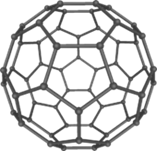
Fig. 1. Scheme of fullerene molecule consisting of 60 carbon atoms (C60 fullerene).
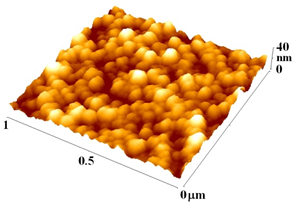
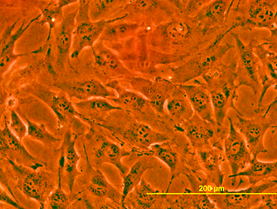
Fig. 2. Atomic force microscopy image of continuous C60 layer morphology (A); human bone cells cultured on this layer (B).
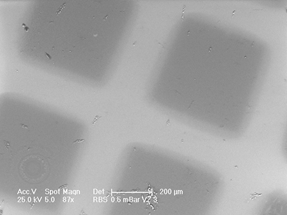
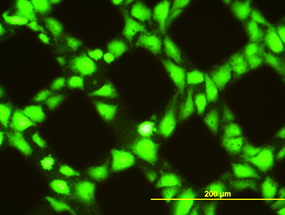
Fig. 3. Morphology of micropatterned C60 layer with prominences (in dark gray) and grooves (in light gray) showed by scanning electron microscopy (A); human bone cells (green fluorescence) growing mainly in grooves among the C60 prominences (B).
Kopová, Ivana - Lavrentiev, Vasyl - Vacík, Jiří - Bačáková, Lucie: Growth and Potential Damage of Human Bone-Derived Cells Cultured on Fresh and Aged C-60/Ti Films. PLoS ONE. Roč. 10, č. 4 (2015), e0123680. ISSN 1932-6203, IF: 3.234, 2014.
